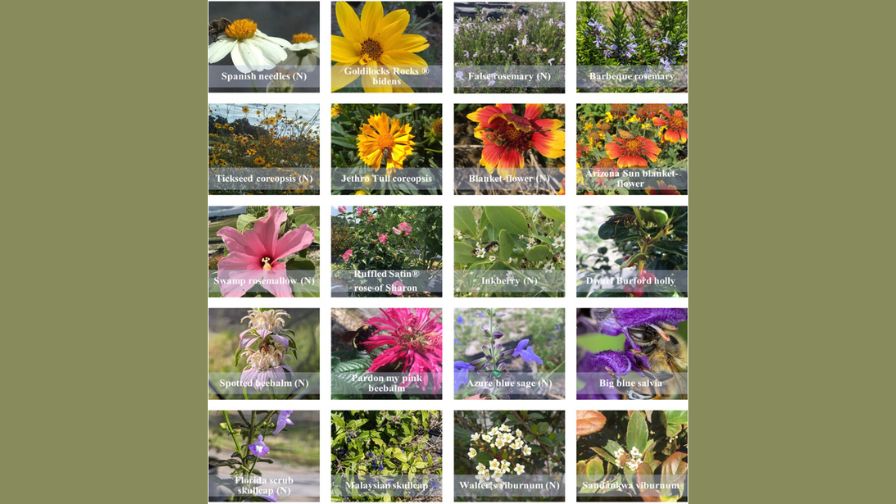
The 10 native and non-native plants used for the study | Joanna J. Silva and Walker Bensch
New evidence from University of Florida research shows that native plant species outperform non-native ones “in growth and floral abundance,” under methods of both full and partial irrigation.
Additionally, the research showed that native plants had the following advantages over their non-native counterparts:
- Lower maintenance costs (less watering)
- More attractive to pollinators
- Quicker to adapt to new environmental conditions
Florida Ornamentals – Natives vs. Non-Natives
The two-year study, titled “Evaluation of Plant Growth and Flowering Performance of Florida Native and Non-Native Ornamentals under Varying Irrigation,” was performed by selecting 20 plants (10 native and 10 non-native), based on the following criteria:
- Anticipated value to pollinators
- Diversity in bloom times
- Variations in flower colors and shapes
The scientists involved in the study planted the 20 species at two locations:
Different irrigation levels were used on the native and non-native species to see how well the plants would grow. While all plants that received a full level of irrigation enhanced their chance of survival throughout the first year of the study, native species outperformed non-native species throughout both years, regardless of water levels, in terms of:
- Flower density
- Plant size
Applying the Study’s Findings to the Market
“This suggests that native plants are more resilient and water-efficient, which is important in areas with water restrictions or droughts,” says Joanna Silva, a Doctoral Student who conducted the research with funding from USDA-NIFA (National Institute of Food and Agriculture) and under the supervision of principal investigator Rachel Mallinger, an Assistant Professor of Entomology. “Native species not only help conserve water but support pollinator populations, which is a key strategy for addressing global pollinator decline.”
With this research supporting efforts to encourage the use of more native and Florida-friendly plant species, especially for the purpose of water conservation, it’s important that its findings are communicated to landscapers, gardeners, and nurseries.
“Many commercially available plant mixes include native and non-native plants, but sometimes, some of these plants do not provide sufficient resources for pollinators – such as nectar and pollen — and they require more maintenance than most ecologically friendly plants,” says Silva. “By planting native plants, they can create more sustainable landscapes that conserve water and support local pollinators and wildlife.”

